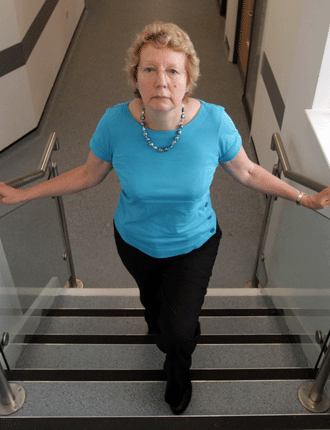September
What does the future hold for the baby boomers?

Professor Carol Jagger explains in The Conversation what the post-war baby boom generation can expect as they age.
If you are British, and were born just after World War II and are therefore in your late 60s, you are one of the post-war baby boomers. This period saw a surge in births and though there were other periods of high births afterwards, it is the first group to have benefited from the NHS for the majority, if not all, of their lives.
Post-war baby boom women have enjoyed greater access to education, particularly further education, than their predecessors and have also been in employment in much larger numbers. More people of this generation got married than previously, and marriage was almost universal from the end of WWII to the 1970s. Nevertheless their early childhood was shadowed by food rationing and the aftermath of rebuilding cities and an economy devastated by war.
Predictable ageing
So what can the post-war baby boomers look forward to as they age into their seventies and beyond?
According to the Office for National Statistics, they can expect to live on average a further five to six years after the age of 65 than their parents did, with an average life expectancy for a current 65-year-old man of 87 years and a woman of 89 years. This means they will be spending close to 25 years in retirement – a long time for their pension to last.
Not all these years will be healthy or free of disability – on average around half of remaining life after 65 will be spent with a disability. However, this proportion differs depending on where you live. A 65-year-old man in Northern Ireland can expect to live over a year longer with disability than men in England, for example.
Even greater inequalities in the years spent with disability are evident at smaller geographical areas. Men aged 65 in London’s Kensington and Chelsea are expected to live for a further 20.6 years, of which 6.2 of these (30%) will be with a disability. Although life expectancy at age 65 for men in Newham is almost four years less (16.7 years), they can expect to live 11.2 years (67%) of remaining life with a disability.
The good news is that the course of disability with ageing is predictable. Disability is often measured by whether a person has difficulty or needs help with personal care activities such as dressing or bathing, or doing things to maintain a household such as shopping or the laundry. As we age it is the household maintenance activities that we first find difficult followed by personal care. And the first activities we lose tend to be those that require mobility and balance.
But it’s not all downhill – there is good evidence that when this happens, tailored physical activity can improve physical function. In a large US study a structured programme of walking, strength, flexibility and balance training in older people already showing some reduction in physical function reduced mobility disability compared to a health education programme.
Knowing the order of loss of activities is important for older people and their families. By recognising the first signs of difficulty with activities, older people can increase their exercise levels to slow down further decline, or actively plan with their families for further dependency and a move to more appropriate housing that again might maintain function for longer. Health professionals might also take a rapid decline in activity loss as a sign to do a more detailed medical assessment.
Much disability that we experience with ageing is due to chronic diseases and conditions, many of which increase with age. Perhaps the condition that increases most strongly with age is dementia, but there is good news even here for the baby boomers – they appear to have a lower prevalence of dementia than their counterparts 25 years before. The reduction in dementia prevalence (from 8.3% in 1991 to 6.5% in 2011) is thought to be a result of better levels of education in the later-born population as well as improved prevention of heart attack and stroke.
But dementia is only one disease. As we reach our 80s, all the chronic diseases and conditions whose prevalence increases with age result in multiple rather than single diseases being the norm. So where we might have just one long-term condition in our mid to late 60s, by our 80s we are more likely to have at least three. Indeed in a study of 85-year-olds in Newcastle, men had on average of four diseases and women five, with 30% having six or more and none of the 845 participants being free of disease. Nevertheless, only 20% of this cohort required help at least once a day.
This does have further implications for the baby boomers, however, since the increases in life expectancy over the last century mean that a considerable number may well have parents of this age who will be requiring care. And of course many baby boomers may also be caring for grandchildren. So their ability to continue in paid employment may not only be affected by their own health, but that of their parents, with implications for government and employers.
Most postwar baby boomers have many years of life to look forward to. Active lifestyles, both physically and mentally, early recognition of deterioration in function and forward planning for their own dependency could allow more of these years to be healthy ones.
This article was originally published on The Conversation. Read the original article.
published on: 8 September 2015
